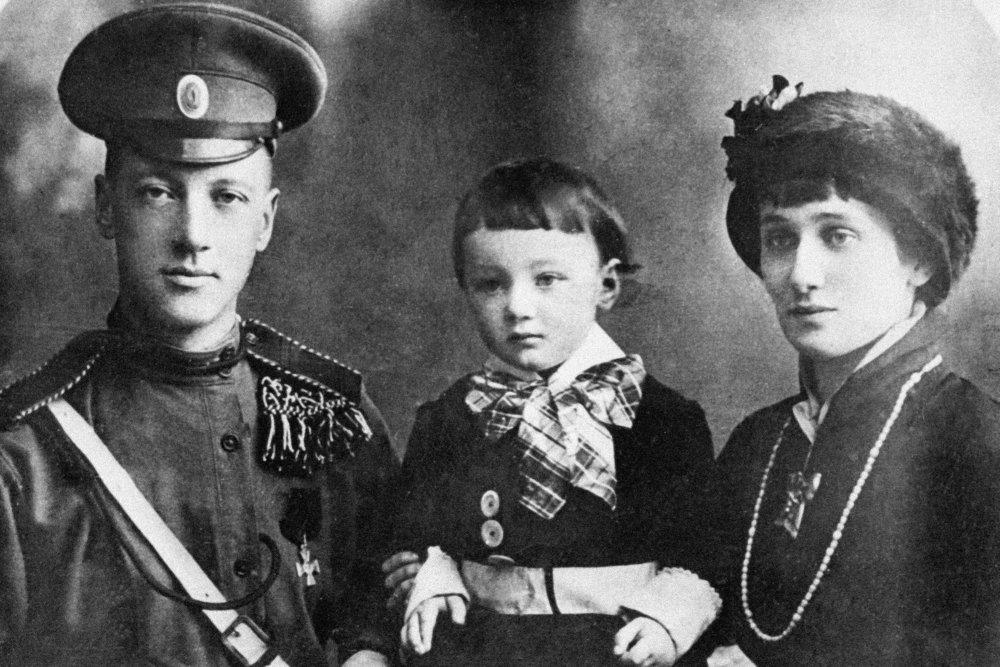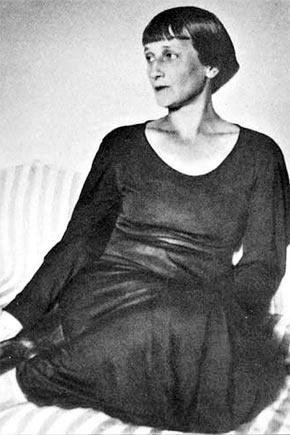Anna Andreevna Akhmatova – facts from life and a love story
 Akhmatova’s poems are saturated with sadness and pain that she and her people had to endure during the terrible revolutionary events in Russia.
Akhmatova’s poems are saturated with sadness and pain that she and her people had to endure during the terrible revolutionary events in Russia.
They are simple and extremely clear, but at the same time – shrill and bitterly sad.
They contain the events of an entire era, the tragedy of an entire people.
The content of the article:
- Childhood and youth
- Love story
- After Gumilyov
- Poetic name
- Creative way
- The piercing truth of poetry
- Little known facts of life
The fate of the poetess Akhmatova – life, love and tragedy
Russian culture hardly knows a more tragic fate than that of Anna Akhmatova. She was destined for so many trials and dramatic moments that, it seems, one person cannot bear it. But the great poetess was able to survive all the sad episodes, summarize her difficult life experience – and continue to write.
Anna Andreevna Gorenko was born in 1889, in a small village near Odessa. She grew up in an intelligent, respectable and large family.

Her father, a retired merchant marine engineer, did not approve of his daughter’s passion for poetry. The girl had 2 brothers and 3 sisters, whose fate was tragic: the sisters suffered from tuberculosis, which is why they died at a young age, and the brother committed suicide due to problems with his wife.

During her school years, Anna was distinguished by her obstinate character. She did not like studying, she was restless, and was reluctant to attend classes. The girl graduated from the Tsarskoye Selo gymnasium, then the Fundukleevskaya gymnasium. Living in Kiev, she studies at the Faculty of Law.
At the age of 14, she met Nikolai Gumilyov, who, in the future, became her husband. The young man was also fond of poetry, they read their own works to each other, discussed them. When Nikolai left for Paris, their friendship did not stop, they continued their correspondence.
Video: Anna Akhmatova. Life and art
The love story of Akhmatova and Gumilyov
While in Paris, Nikolai worked for the newspaper “Sirius”, on the pages of which, thanks to him, appeared one of the first poems of Anna “There are many shiny rings on his hand.”

After returning from France, the young man proposed to Anna, but was refused. In subsequent years, a marriage proposal came to the girl from Gumilyov several times – and, in the end, she agreed.
After the wedding, Anna and her husband Nikolai lived in Paris for some time, but soon they returned to Russia. In 1912, they had a child – their son was named Leo. In the future, he will link his activities with science.

The relationship between mother and son was complicated. Anna herself called herself a bad mother – probably feeling guilty for the numerous arrests of her son. Many trials fell on the fate of Leo. He was imprisoned 4 times, each time innocently. It is difficult to imagine what his mother had to go through.
In 1914, Nikolai Gumilyov leaves to fight, after 4 years the couple divorced. In 1921, the former husband of the poet was arrested, accused of conspiracy and shot.
Video: Anna Akhmatova and Nikolay Gumilyov
Life after Gumilyov
Anna met V. Shileiko, a specialist in ancient Egyptian culture. The lovers signed, but their family did not last long.
In 1922, the woman married for the third time. Art critic Nikolai Punin became her chosen one.

Despite all the vicissitudes of life, the poetess did not stop creating her creations until she was 80 years old. She remained an active author until the end of her days. Ill, in 1966 she ended up in a cardiological sanatorium, where her life ended.
About the poetic name of Akhmatova
The real name of Anna Akhmatova is Gorenko. She was forced to take a creative pseudonym because of her father, who was against her daughter’s poetic hobbies. Her father wanted her to find a decent job, and not make a career as a poet.
In one of the quarrels, my father shouted: “Don’t shame on my name!”, To which Anna replied that she didn’t need it. At the age of 16, the girl takes the pseudonym Anna Akhmatova.
According to one version, the ancestor of the Gorenko family in the male line was the Tatar khan Akhmat. It was on his behalf that the surname Akhmatova was formed.
As an adult, Anna humorously discussed the correctness of the choice of the Tatar surname for the Russian poetess. After a divorce from her second husband, Anna officially took the name Akhmatova.

Creative way
The first poems of Akhmatova appeared when the poetess was 11 years old. Even then, they were notable for their non-childish content and depth of thought. The poetess herself recalls that she began to write poetry early, and all her relatives were sure that this would become her vocation.
After marriage with N. Gumilev, in 1911 Anna became the secretary of the “Workshop of Poets”, organized by her husband and other well-known writers at that time – M. Kuzmin and S. Gorodetsky. O. Mandelstam, M. Zenkevich, V. Narbut, M. Moravskaya and other talented personalities of that time were also members of the organization.
The participants in the “Workshop of Poets” began to be called acmeists – representatives of the new poetic trend of acmeism. It was to replace the declining symbolism.
The distinctive features of the new direction were:
- Increasing the value of every object and life phenomenon.
- The Rise of Human Nature.
- Precision of the word.

In 1912 the world saw the first collection of Anna’s poems “Evening”. The opening words to her collection were written by the famous poet M. Kuzmin in those years. He accurately felt the specifics of the author’s talent.
M. Kuzmin wrote:
“… she does not belong to poets especially cheerful, but always stinging …”,
“… the poetry of Anna Akhmatova gives the impression of sharp and fragile, because her very perceptions are like that …”.
The book includes the famous poems of the talented poetess “Love conquers”, “I clenched my hands”, “I lost my mind.” In many of Akhmatova’s lyric poems, the image of her husband, Nikolai Gumilyov, is guessed. The book “Evening” glorified Anna Akhmatova as a poetess.
The second collection of poems by the author, entitled “Rosary”, was published simultaneously with the outbreak of the First World War. In 1917, the third collection of works “White Flock” came off the printing press. Against the background of the shocks and losses that befell the poetess, in 1921 she published the collection Plantain, and then Anno Domini MCMXXI.
One of her greatest works, the autobiographical poem Requiem, was written from 1935 to 1940. It reflects the feelings that Anna had to experience during the shooting of her ex-husband Nikolai Gumilyov, the innocent arrests of her son Lev and his exile to hard labor for 14 years. Akhmatova described the grief of women – mothers and wives – who lost their husbands and sons during the years of the “Great Terror”. For 5 years creating Requiem, the woman was in a state of mental anguish and pain. It is these feelings that permeate the work.
Video: Voice of Akhmatova. “Requiem”
The crisis in Akhmatova’s work came in 1923 and lasted until 1940. They stopped publishing it, the authorities oppressed the poetess. To “shut her mouth”, the Soviet government decided to hit the mother’s most sore spot – her son. The first arrest in 1935, the second in 1938, but this is not the end.
After a long “silence”, in 1943 a collection of poems by Akhmatova “Selected” was published in Tashkent. In 1946, she prepared the following book for publication – it seemed that the oppression of many years was gradually softening. But no, in 1946 the authorities expelled the poetess from the Writers’ Union for “empty, ideological poetry.”
Another blow for Anna – her son was again arrested for 10 years. Lev was released only in 1956. All this time, the poetess was supported by her friends: L. Chukovskaya, N. Olshevskaya, O. Mandelstam, B. Pasternak.
In 1951, Akhmatova was reinstated in the Writers’ Union. The 60s were a period of widespread recognition of her talent. She became a nominee for the Nobel Prize, she was presented with the Italian literary award “Etna Taormina”. Akhmatova was awarded an honorary doctorate in literature at Oxford.
In 1965, her last collection of works, The Run of Time, was published.

The piercing truth of the works of Akhmatova
Critics call Akhmatova’s poetry a “lyric novel.” The lyricism of the poetess is felt not only in her feelings, but also in the story itself, which she tells the reader. That is, in each of her poems there is some kind of plot. Moreover, each story is filled with objects that play a leading role in it – this is one of the characteristic features of Acmeism.
Another feature of the poems of the poetess is citizenship. She devotedly loves her homeland, her people. Her poems show sympathy for the events taking place in her country, compassion for the martyrs of this time. Her works are the best monument to the human grief of wartime.

Despite the fact that most of Akhmatova’s poems are tragic, she also wrote love, lyric poems. One of the famous works of the poetess is “Self-portrait”, in which she described her image.
Many women of that time stylized their image like Akhmatov’s, rereading these lines:
… And the face seems paler
From purple silk
Almost reaches the eyebrows
My loose bangs …

Little-known facts from the life of the great poet
Some moments of a woman’s biography are extremely rare. For example, not many people know that at a young age, due to an illness (probably due to smallpox), the girl had hearing problems for some time. It was after suffering deafness that she began to write poetry.
Another interesting episode from her biography: the groom’s relatives were not present at the wedding of Anna and Nikolai Gumilyov. They were convinced that the marriage would not last long.
There are guesses that Akhmatova had an affair with the artist Amadeo Modigliani. The girl charmed him, but the feelings were not mutual. Several portraits of Akhmatova belonged to Modigliani’s brush.
Anna kept a personal diary all her life. He was found only 7 years later from the death of a talented poetess.
Anna Akhmatova left behind a rich artistic heritage. Her poems are loved and re-read over and over again, films are made about her, streets are named after her. Akhmatova is a pseudonym for an entire era.

Colady.ru website thanks you for your attention to the article! We will be very pleased if you share your feedback in the comments below.
What to give a friend?
Gift Certificate! You can give it to your loved one or use it yourself.
And we also give away a certificate for 3000 rubles every month. among new email subscribers. Subscribe!
Select a certificate in the store
Visit Bologny for more useful and informative articles!





